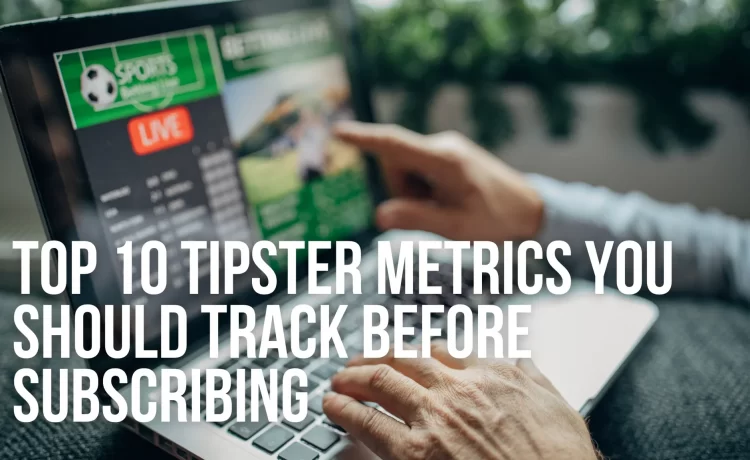Not all tipsters are created equal.
Some post screenshots of big wins but hide their losing streaks. Others make vague predictions or change records after-the-fact. If you’re serious about profit—not just hype—then you need to look at real metrics before subscribing to any tipster.
At TipstersAnalysis.com, we believe in data-backed betting decisions. That’s why we’ve compiled the 10 most important tipster metrics every bettor should understand before following or paying for tips.
1. Win Rate (%) — But Don’t Obsess Over It
What it is: The percentage of bets won out of total bets placed.
Why it matters: A high win rate looks attractive—but alone, it can be misleading. Some tipsters with 70%+ win rates may only give very short odds (e.g., 1.30), which limits profits.
Look at win rate together with odds and ROI.
2. Return on Investment (ROI)
What it is: Profit made as a percentage of the total money staked.
Formula:
ROI = (Total Profit / Total Stakes) x 100
Why it matters: ROI is the gold standard for judging performance. A tipster with 7%–15% ROI over hundreds of bets is excellent.
The higher the ROI, the more value they’re delivering over time.
3. Units Profit
What it is: How much profit they’ve made, calculated in “units” (not actual currency).
Why it matters: Standardizes performance. A 50-unit profit means more than “RM5,000 profit” because it removes stake-size inflation.
Always ask: “How many units of profit?”—not just money figures.
4. Average Odds
What it is: The typical odds the tipster bets on.
Why it matters: Helps you understand the risk style. Are they giving favorites at 1.50 or longshots at 3.00+?
Pair this with win rate to assess how realistic their betting strategy is.
5. Bet Volume (Sample Size)
What it is: Total number of recorded bets.
Why it matters: 10 wins in a row doesn’t mean much if they’ve only shared 15 bets. A proper sample size is 300+ bets or 3–6 months of consistent history.
More data = more reliable performance.
6. Yield Curve / Monthly Profit Trends
What it is: Visual representation of monthly profits or losses.
Why it matters: You want a tipster with long-term growth, not someone who had one good month and went cold. Yield charts reveal consistency and variance tolerance.
Look for steady upward trends, not just explosive peaks.
7. Staking Strategy (Flat vs. Variable Stakes)
What it is: Whether the tipster uses a fixed stake per bet (e.g., 1 unit every time) or adjusts stake sizes.
Why it matters: Variable staking can inflate profit numbers. Flat stakes are more transparent and trustworthy.
Prefer tipsters using flat stakes—or at least transparent variable logic.
8. Closing Line Value (CLV)
What it is: A measure of whether the tipster consistently beats the market’s final odds before kickoff.
Why it matters: Beating the closing line (e.g., giving a tip at 2.10 that closes at 1.95) proves they’re finding early value—a hallmark of sharp betting.
CLV > 0.05 (average) is a strong sign of tipster skill.
9. Market Focus
What it is: The sport, league, and bet types the tipster specializes in.
Why it matters: Some tipsters are great in Asian Handicaps, others in NBA totals or tennis outrights. Know what they focus on—and whether it suits your interest and bankroll.
Niche markets can offer more value if tipsters specialize.
10. Verification Source
What it is: How and where their record is tracked.
Why it matters: Anyone can edit spreadsheets or delete losing posts. Only independent tracking (like TipstersAnalysis.com) ensures transparency.
Avoid tipsters who refuse to track performance on third-party platforms.






